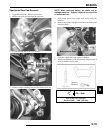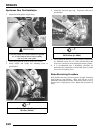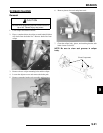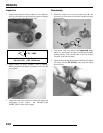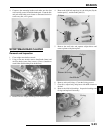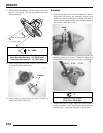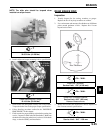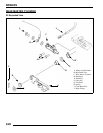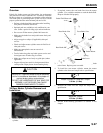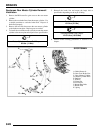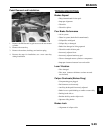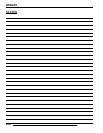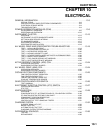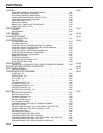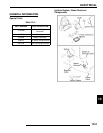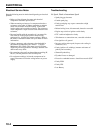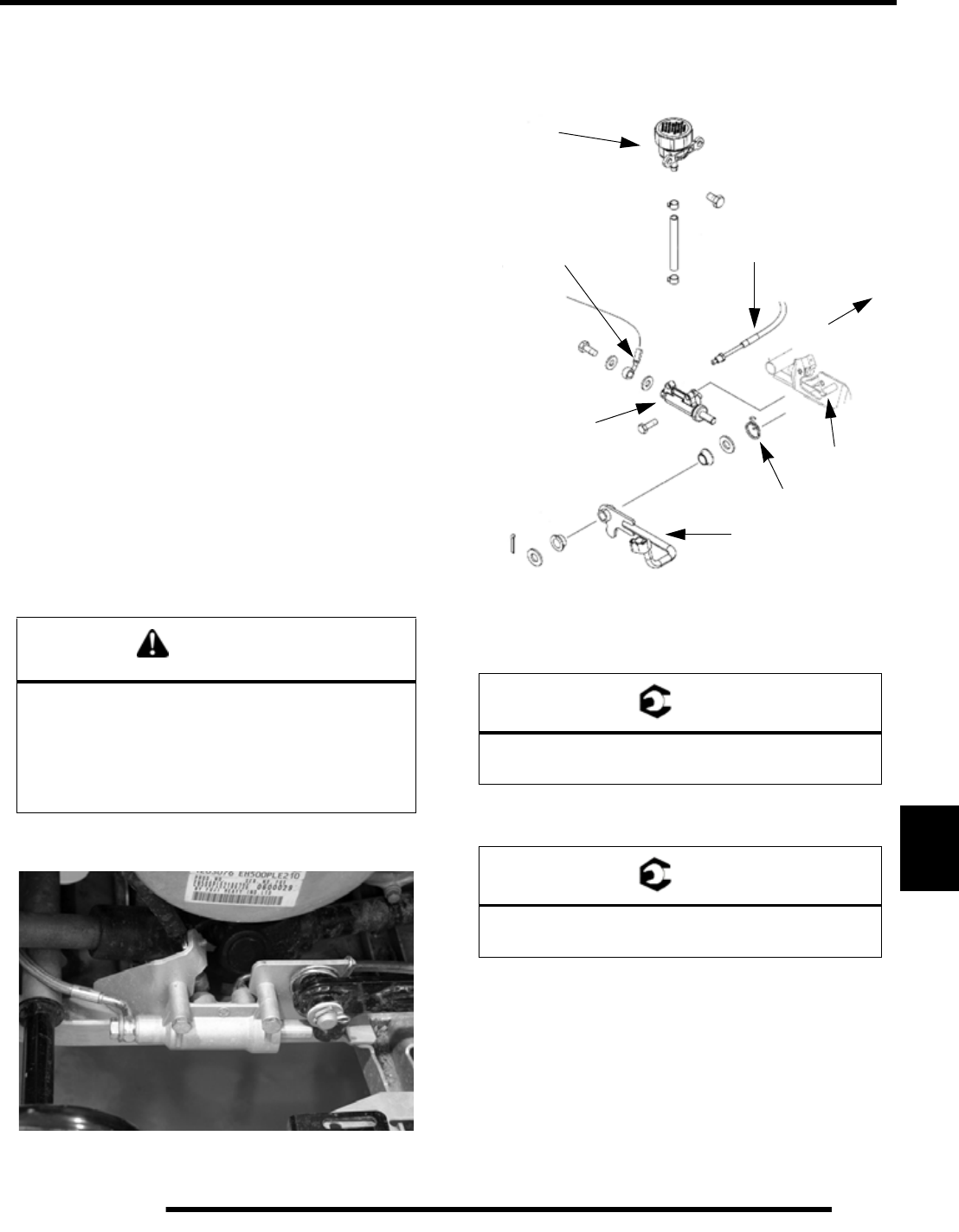
9.27
BRAKES
9
Overview
Polaris disc brake systems are light weight, low maintenance
and perform well in the conditions ATV’s routinely encounter.
However, there are a few things to remember when replacing
disc brake pads or performing brake system service to ensure
proper system function and maximum pad service life.
• Perform a brake burnishing procedure after installing
new pads to maximize service life.
• Optional pads are available to suit conditions in your
area. Select a pad to fit riding style and environment.
• Do not over-fill the master cylinder fluid reservoir.
• Make sure the brake lever and pedal returns freely and
completely.
• Adjust stop pin on caliper (if applicable) after pad
service.
• Check and adjust master cylinder reservoir fluid level
after pad service.
• Make sure atmospheric vent on reservoir is
unobstructed.
• Test for brake drag after any brake system service and
investigate cause if brake drag is evident.
• Make sure caliper moves freely on guide pins (where
applicable).
• Inspect caliper piston seals for foreign material that
could prevent caliper pistons from returning freely.
X2 Rear Master Cylinder Removal and
Installation
1. Remove the RH footwell to gain access to the rear master
cylinder.
2. If required, remove the rear brake line from the master
cylinder. Use a suitable container to catch the brake fluid.
Dispose of brake fluid properly.
3. Remove the two bolts that secure the rear master cylinder
to the frame. Replace parts as needed.
4. To install the rear master cylinder, mount the master
cylinder to the frame and torque bolts to specification.
5. Reinstall the brake line and torque the banjo bolt to
specification.
6. Perform brake bleeding procedures as outlined in this
chapter.
CAUTION
Use only DOT-approved brake fluid as an assembly
aid for all procedures described in this chapter to
prevent brake system contamination.
DO NOT USE LUBRICANTS OF ANY KIND FOR
ASSEMBLY, AS THEIR USE CAN CAUSE
RUBBER COMPONENTS TO SWELL.
= T
Master Cylinder to Frame Bolt Torque:
8 ft.lbs. (11 Nm)
= T
Banjo Bolt Torque:
15 ft.lbs. (21 Nm)
Frame
Brake Fluid Reservoir
Brake Lever
Front Brake Line
Brake Mount
Rear Brake Line
Spring
Rear Brake MC



